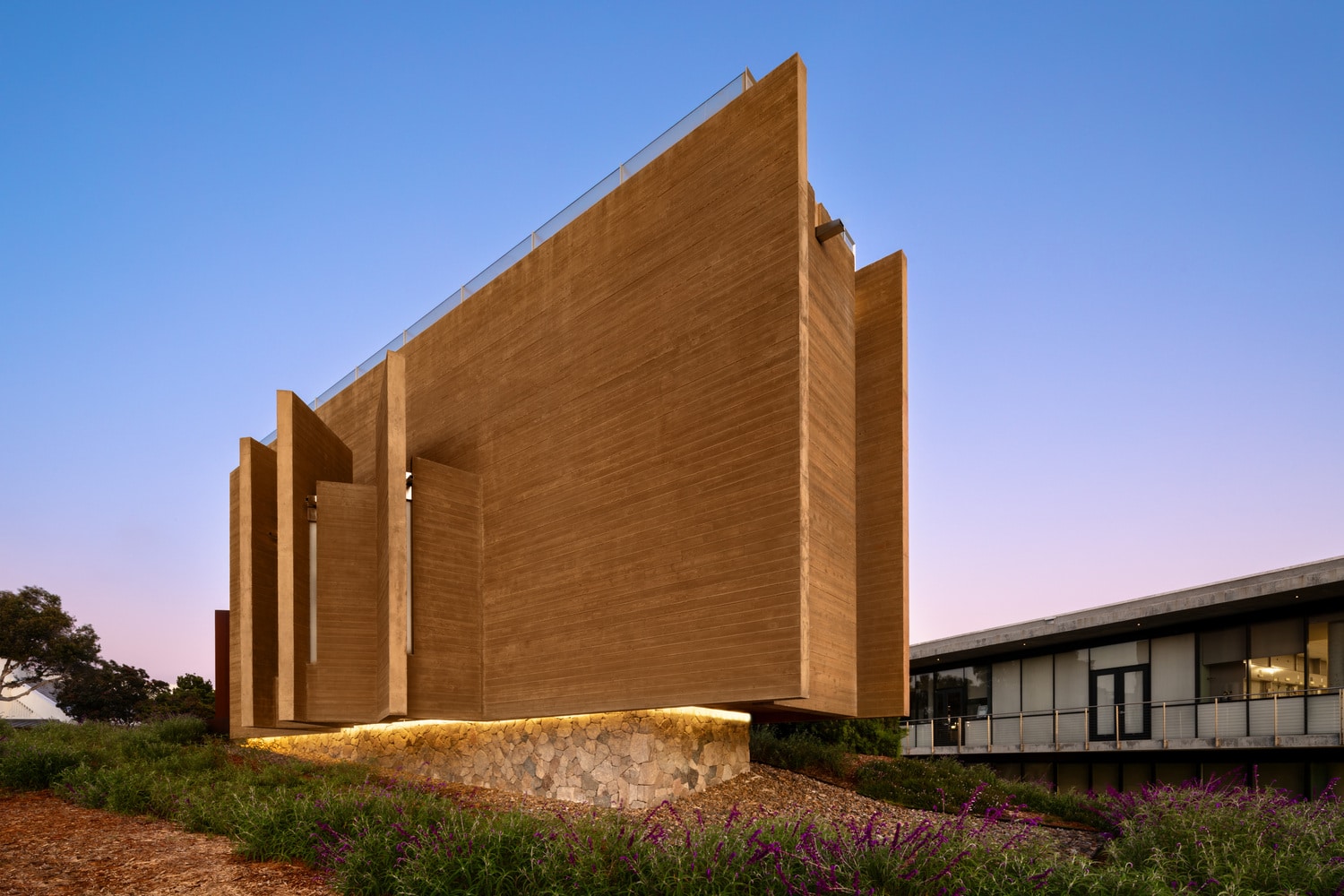ArchDaily Shares Point Loma Nazarene University Prescott Chapel
See the original posting on ArchDaily here: https://www.archdaily.com/1015420/point-loma-nazarene-university-prescott-chapel-carrier-johnson-plus-culture

Text description provided by the architects. Set above the Sunset Cliffs overlooking the Pacific Ocean, Point Loma Nazarene University’s campus is governed by the overriding security of Christ’s love. The university desired a new chapel to replace the existing one, anchor their campus entrance to the north, and provide a serene space for spiritual reflection and connection. They sought a building that physically embodies eleven key principles:
1. God’s presence
2. Spiritual Anchor
3. Christ’s Embrace
4. A Path to Christ
5. Spiritual Beacon
6. Connection to Christ
7. Light of the World
8. Power of God’s Light
9. Remembrance
10. God as Nature
11. Expressing Intention
Visiting this chapel is a ceremonial procession of the body, mind, and spirit. A winding path takes visitors from the campus, up the hill, and around beautiful plantings. Visitors can choose to rest at one of three outdoor garden prayer areas, under a preserved tea tree, or enter the chapel. The chapel’s entry plays with scale to enhance the progression from exterior to interior.
Visitors are brought in through a large open entry that compresses down at the doorway, spatially hugging the visitor to create a sense of comfort. Continuing through to the prayer area, the space dramatically opens and lifts, elevating one’s gaze to a suspended woven wooden nest that encapsulates the interior- an architectural expression of Christ’s crown of thorns.
Materiality is used as a tangible significance of Christ’s presence. Strong and sturdy materials such as concrete and rammed earth convey a sense of permanence, presence, and strength while the use of organic materials such as wood and wicker evoke Christ’s warm embrace. Earth-tone colors root the chapel in its rocky clifftop environment.
Simple forms and motifs directed our design thinking; pure geometries allow the space to serve its true purpose in encouraging visitors to connect with Christ with minimal environmental distractions. The design forgoes pews to further simplify the space. Diffuse lighting is filtered through intricate screens of wicker, creating a soft, ambient atmosphere that quiets the mind.
A short span of 33 feet, symbolic of Christ’s age when he died, separates the entrance from the nave where visitors encounter the centerpiece – a free-standing cross of hickory and stainless steel. Positioning the cross away from the nave wall, to which it is typically attached in other chapels, reminds visitors that the cross is a three-dimensional object one can approach and walk around, much like the cross upon which Christ died. Visitors can write letters and attach them to the cross – a tradition carried over from the previous chapel.
Three personal prayer spaces, emblematic of the Trinity, radially array from the center of the cross as their focal point. These serve as individual moments of prayer for those seeking a more intimate connection with Christ. We encapsulated these small prayer spaces in a screen of wooden planks that create privacy while still allowing views into the main space.
Three personal prayer spaces, emblematic of the Trinity, radially array from the center of the cross as their focal point. These serve as individual moments of prayer for those seeking a more intimate connection with Christ. We encapsulated these small prayer spaces in a screen of wooden planks that create privacy while still allowing views into the main space.